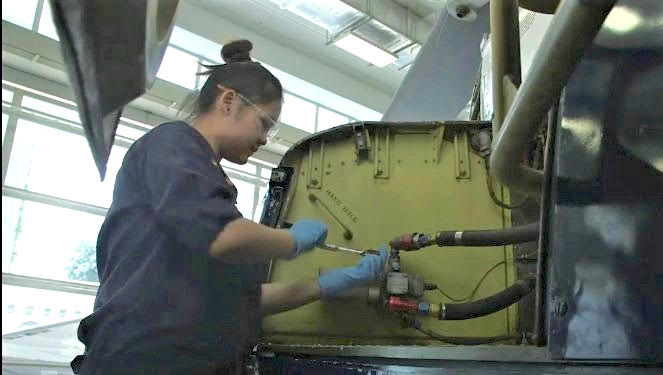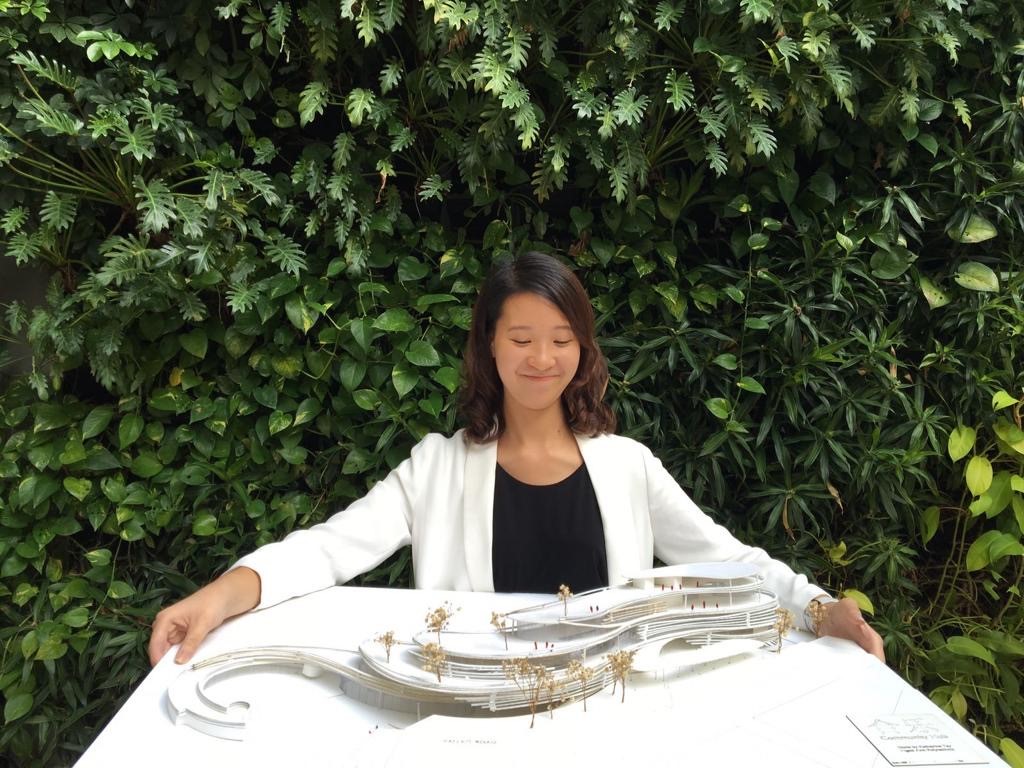What makes a plane fly? How could a large amount of metal carry the weight of people and goods and bring them across vast distances?
18-year old Nicole Ng has always been fascinated by planes. As a child, the sound of a plane flying overhead would always draw her to the window, where she would follow the path of the aircraft with her eyes until it went out of sight.
Nicole’s interest in machines was further piqued in Primary 4, when she took part in a competition that required her to build a small boat with some pieces of plastic and a simple motor. Although she did not win, she discovered that she liked fixing and building things that moved.
“A boat and a plane may work differently,” she said, “but they are both solutions humans found to transport themselves over large distances. I was very curious about how people built machines to do all this work for them!
Exploring the basics
It would be a few years before Nicole got to take up aviation as her specialisation, but secondary school gave her the opportunity to explore her interest in machines and engineering.
Her school’s Applied Learning Programme (ALP) was in Science and Technology. In this programme, all lower secondary students got to learn about the basics of engineering and even use a computer programme to create 3D-models of products they designed.
“It was fun making things from scratch,” she described. “Although what we did in secondary school was not that complex, it helped me to understand more about how technology is developed.”
Besides ALP, Nicole also got the opportunity to explore her interest in machines in Design and Technology (D&T) lessons.
“I like D&T because we have to come up with a plan and build something to solve a problem. I am a hands-on person, and this excites me.”
For her N-level coursework for D&T, Nicole designed a device for transport. Based on the concept of a conveyor belt, the tool helps people move a box from one place to another without having to carry it. The whole project was a test not only of her skills with the various tools in the D&T workshop, but also her determination to take her product from a mere idea to a working model over the course of six months.
Her efforts were not in vain. Besides the sense of accomplishment that came with completing her product, Nicole also received an award for being the top student for N(T)-level D&T in her school.
It was no wonder that when the time came to look at her post-secondary options, Nicole chose a course where she could continue working with machines… powerful machines that can propel flight.
Pre-book a seat with EAE
While reading up on the courses offered by the Institute of Technical Education (ITE), Nicole was immediately attracted to the Aerospace Technology course, which trains students to maintain and repair aircraft and engine systems – an essential role in the aerospace industry.
“I spent a lot of time reading through the course requirements,” she shared, “and also reading up on aviation and planes so that I knew what I was getting into. It is not something many girls would do, but the more I read, the more I wanted to learn about this industry.”
Having heard that Aerospace Technology was a popular course, Nicole decided to take up her teachers’ advice and apply for the Early Admissions Exercise (EAE) to secure a place in the course before her N-level exams.
Knowing that there was an interview made her really nervous though!
“I am quite an introvert and wasn’t really good at talking,” she shared. “Luckily the interviewer was quite kind and I managed to warm up after a while.”
Although speaking was not her forte, Nicole had clearly done some research on aviation and was able to answer most of the questions asked. That, and her experience in building things in D&T helped impress upon the interviewers that she was genuinely interested and would be suitable for the course.
“I was very relieved when I found out I got a place! I was worried about what would come after secondary school. But knowing I had a place in the course, I could focus on clearing my final examinations and enjoying my last few months in secondary school.”
On-board (and under) the plane
Nicole is now in her second year of the Nitec course in ITE College Central and thoroughly enjoying the experience thus far – especially the practical sessions, which take place around three times a week.
The Aerospace Hub in ITE College Central has a hangar that houses a range of aircrafts and aircraft engines so that students can practise their skills in authentic settings. For Nicole, the highlight of her lessons was, of course, getting up close with the different parts of various aircraft, examining all the different parts and discovering what they do.
“We even got to step into the cockpit of a plane and see all the controls and how they work! That is something that few people would have the chance to experience.”

Of course, given how the safety of the plane and the lives of hundreds of people hinge upon an aircraft technician’s work, there is a lot to learn too.
Students have to understand theories in aerodynamics, how various parts of the engines work, remember all the different plane and engine models, and steps to inspect, maintain and repair the aircrafts.
Nicole admitted that it was challenging to remember everything, especially at the start, but she managed because it was something she was deeply interested in.
“After I joined this course, I could not sit on a plane and just enjoy the view outside the window like I did when I was younger,” she joked.
“My mind automatically jumps to how the engine is processing and what the different parts of the plane are doing at each stage of the flight. I would even imagine what I should do if there is a fault in the engine mid-flight!”
Taking off – ITE and beyond
Beyond the technical aspect of aircraft maintenance, ITE also gave Nicole the chance to explore aircraft design.
In 2019, she was part of a team of three students from ITE who took part in a competition organised by the International Civil Aviation Organisation (ICAO) to encourage innovation in aviation.
The team submitted a design featuring a squid-shaped aircraft that was inspired by how a squid’s stream-lined body was able to cut through the water swiftly. Their aim was to create an efficient and safe plane design that could reduce the cost of flights, and potentially save lives.
Nicole was responsible for producing the sketches for the design.
She explained, “We also included a detachable cabin with parachutes that would work as a safety mechanism in case of an emergency.”

To the team’s surprise – and the immense pride of all involved in the project – their design was awarded the Global Grand Prize in the tertiary category.
To have one’s work recognised on an international platform must have been a heady experience, but Nicole was modest about her achievement.
“I’m grateful that our work was appreciated by others, and hope that I can continue to contribute in innovative solutions in aviation in the future.”
Nicole will complete her Nitec course early next year. She hopes to take up a related course in polytechnic after that to further deepen her skills and knowledge of aviation technology.
Although the aviation industry has taken a hit during the COVID-19 outbreak this year, Nicole is confident that things will pick up once the pandemic is over and her skills as an aircraft technician would be in demand as much as ever.
After all, aerodynamics may make a plane fly, but it takes people with the right knowledge and skills to engineer the machines that give humans the freedom of the skies.






